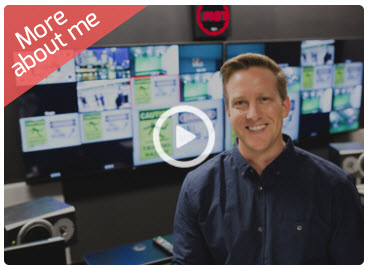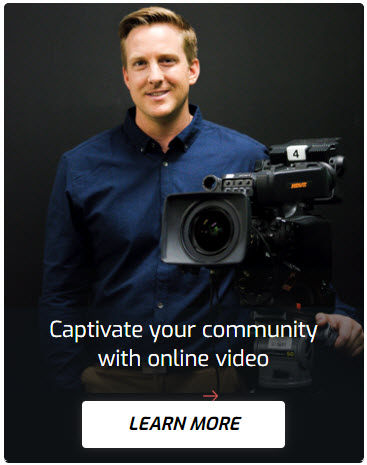With so much content available for people to choose from, you need to make sure that the content that you make will stand out from the rest.
In addition to that, you also have to find a way to hold your audience’s attention long enough for you to get your entire message across without them zoning out, getting distracted or scrolling past you for more.
You and the message you want to share go hand-in-hand. Your body language and your presence leave the biggest impression, but your words are also a powerful and effective way to connect with your audience.
The reality is that if your audience does not connect with you as a person, they won’t connect with your message either.
Consider these 5 Speech Strategies you can use for your videos. I guarantee that these will make a good impression and leave your audience wanting more.
1. Follow a Structure
I’m sure you know of the basic outline when writing a speech, but if you don’t, I am talking about the introduction, body, and conclusion. Or as I like to say the beginning, the middle and the end. Every good story and speech has all three! So yours will need them too.
This three-part outline is something you should utilize when constructing your video scripts. Having an outline will help you organize your thoughts and stay on track so you can get your message across loud and clear.
This also really helps if you have massive ideas floating around in your head, like me!
When working on your outline, remember that audiences have expectations. Basically, they want to be aware of the purpose of your video or live stream and they also want to be able to have something to take away.
A good speech needs an engaging beginning, a strong middle, and a solid, purposeful ending.
2. Have a Focus
 Have you ever watched a video or a Livestream and thought, “What was that even about?” Would you listen to that person again? Probably not.
Have you ever watched a video or a Livestream and thought, “What was that even about?” Would you listen to that person again? Probably not.
Remember that even if your viewers don’t necessarily pay to watch your videos, they are giving you their priceless time and attention. They chose to listen to you and the best thing you can do for them is have a clear focus and a clear message.
Trim the fat... Don’t try to say too much and don’t waste people’s time. If you follow this strategy, your audience will react positively because your videos will always make sense and your audiences will feel like they used their time well and received value without having to make a big sacrifice.
3. Connect Early and Stay Connected
When you’re in the early stages of presenting to camera, there are a couple of benefits to getting used to recording your message vs. going straight to Live-streaming.
Number one is that no matter how many times you screw up or you’re not happy with a take... You can do it time and time again. However, one of the challenges you will face in recording on-camera is engaging your audience without receiving feedback. This will become especially apparent for people who are making that transition from speaking on stage to video presenting.
When you’re on stage you can feel the audience and the energy of the room, you can see people’s facial expressions, their head nods, their laughter, and their body language.
Even on a Livestream, you can get feedback through hearts, likes, and rewarding emoji smiley faces...
But with video presenting, you get none of this, so you have to be thick-skinned, and learn to simultaneously put that audience in place and visualize how they will be reacting.
[Get our Facebook Live Planning Template here]
Once you master this, you will be in the flow!
If your speech fails to engage and connect with your audience, your video will simply fall flat and most likely will fail to compel your viewers into action.
The opening is the best time to engage your audience. They are the most receptive during the first few moments of your video, so get them engaged and interested early on.
When presenting your video, consider sharing an amusing fact, an impressive statistic, a funny anecdote, or you could even ask a question (but make sure that it is connected to your message or topic) and be sure not to pause for too long before your answer it unless it’s rhetorical to avoid an awkward silence.
Remember, your job is to say or do something that will grab your audience’s attention and make them want to continue watching.
So, once you have your audience’s attention, what can you do to keep that engagement and connection?
When delivering your message, use a conversational tone and be yourself just as you would when talking to a friend, but with a slightly heightened level of energy.
Don’t get into the zone where you feel like you’re selling or presenting a product to strangers.
Just be yourself and imagine that you’re having that conversation with a friend who is interested and hanging onto your every word. This will help you feel confident and be at your best while you speak.
4. Give Them Something to Do
So, you have the structure down, your focus is clear, and you’ve made sure that your message will engage and connect with your viewers.
Let’s say you’ve successfully held your viewer’s attention for the whole duration of your video. What about afterward?
Are you content with your viewer just going back to their everyday life, unaffected by what they just saw?
Remember, even if it’s just you who will do all the talking in the video, a speech is actually a two-way conversation. Your message should spark a reaction from your audience.
One of the best ways to do this is to give your viewers something to do or think about, or an action they can take with the new information you have armed them with. 
You have inspired your audience and it’s time to compel people into action. Think about the individual.
What do you want this person to do after they have heard your message? It’s time to instruct them to do that or do something closely related to that. This will empower them and reinforce their belief in your message, and as cheesy as this sounds, this will keep you in their thoughts!
5. Leave Them Wanting More
Your viewers will most likely remember your conclusion more than any other part of your presentation. Make sure to recap the central theme or most prominent point of your message so your audience feels like they learned something.
If you did well, they may feel inspired, or even changed, by your message. If you started your speech with a bang, then your conclusion should be a bigger bang so you can end on a high and leave them wanting more.
Remind your audience of the reason why they just listened to what you had to say and let them know that they have just taken one step closer to greatness and their desired outcome.
With All that Said…
In order to use these strategies, you need confidence in your message and in yourself, plus an understanding of your audience.
If you want your audience to accept your message and believe you, you have to believe in yourself first! Get your message out there!
See you on-screen!
Aaron





